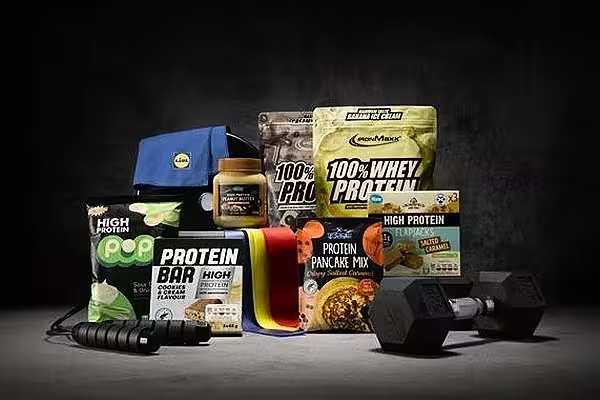It has never been more important for grocery retailers to stand out to shoppers. But, how do you ensure you have a customer experience that reflects what you stand for? Read on to discover how to stand out for the right reasons.
Do the words 'Live long and prosper' mean anything to you? If you're a Star Trek fan – and even if you're not – you might recognise the catchphrase of Spock, the most distinctive character from the original 1960s series. There's a reason why those words are still remembered today. Spock stood out.
As retail becomes more and more competitive, defining what you stand for is more important than ever.
Retailers who stake their claim on – and successfully execute – simple points of difference that resonate with customers will be the ones to survive and flourish.
The Repercussions Of Competition Grow Ever Broader
For years it's been said that we're seeing unprecedented levels of threat and competition in grocery retail. This still holds today, with a host of trends affecting regional grocers in particular.
The discounters Aldi and Lidl continue to roll out aggressive expansion plans, attracting both the value-oriented shopper as well as the savvy, affluent shopper. In addition, a newly opened Walmart can have a devastating impact on a store's sales when it comes to town.
A Close Look At The Changing Retail Landscape
Gen Z-ers are not content shopping in a store simply because it's where their parents shopped – they seek more from their retail choices. And it's not just younger folk who are taking advantage of digital options.
The COVID period has brought about a unique acceleration in online grocery retailing, with some stores getting over 50% of their trade online at the height of the pandemic.
For example, in the US, to secure a greater competitive advantage we're seeing mergers and acquisitions of the regional players – Food Lion's acquisition of 62 Bi-Lo and Harveys stores from South Eastern Grocers, to the newly announced merger of Price Chopper/Market 32 and Tops Markets.
It is clear that regional grocers can no longer rest on their laurels and rely on being their customers' closest (or even only) store in order to guarantee their trade.
More than ever, they need to cater to shoppers' most nuanced preferences if they want to become the destination of choice.
Define What You Stand For – The Simpler The Better
As the saying goes, it's better to be great at one thing than mediocre at many. That's not to say there aren't numerous levers for a grocer to monitor – product, price, service, etc. – but it can only realistically make a significant impact on the customer on a small number of these.
Trying to stand out in too many ways will likely result in a business spreading itself thin and go unnoticed by the customer, and it will create headaches for team members who are pulled in too many directions.
Retailers who embed their points of difference throughout the entire business – via well-defined vision and mission statements, strategies, personal objectives and so on – have the greatest chance of bringing these differences to life.
Effective execution is crucial, and businesses shouldn't lull themselves into thinking that just because they say they stand for something, that it automatically means they are delivering on that promise to the customer.
This leads us on to brand positioning, which is more important than ever. Without marketing, merchandising and store operations working effectively together to ensure it genuinely translates into an authentic shopping experience, the customer will ultimately shop elsewhere, as they align themselves with grocery brands that suit their own values.
COVID Has Given Some Retailers A Boost In Revenue – But It's Temporary
Retail sales have been strong during the pandemic. Many traditional grocers have performed better than usual as they benefit from customers' needs to stock up on essentials, no matter where from. And those who had already built a robust digital offering have truly profited.
Customers were forced to prioritise safety and convenience above all. However, when things eventually return to normal, their priorities will again shift, and retailers will need to double down on (and even reassess) their points of differentiation.
And as research shows that the cost base for grocery retailers has increased, getting this wrong could be expensive.
The linchpin of a successful differentiation strategy should be customer insight. But how do you ensure you use insight correctly?
Here are some ways to achieve this:
1. Plan: Determine what you're going to stand for
- Who are your actual and potential customers?
- What do they think and how do they shop?
- Which features of the shopping experience are most important to them? What will/won't resonate with them?
- Which features of the customer experience do you have the right to win with – and what will it take to do this?
- What is the potential size of the prize?
2. Test: Refine your points of difference
- Showcase your initiatives in test stores versus control sets.
- Refine and adapt your approach based on results.
3. Implement: Run your strategy across Marketing, Merchandising and Operations
- Formalise your strategy with clear statements from the top of the organisation with buy-in and leadership from all divisions.
- Establish common customer-focused goals to put all teams on the same page.
- Leverage customer insights and analytics to find the right product choices, layout, pricing, promotions and store experience to fit your strategy.
- Use analytics for ongoing measurement and course correction when things don't go as expected.
Insight Is Essential To Ensure Real Customer Behaviour Change
At the end of the day, it isn't working if it isn't translating into the desired customer behaviour.
Customer insight and analysis tools provide essential support in informing, testing and running a differentiation strategy. They bring the customer to the heart of your decision-making.
In the past, simply knowing your customers better than anyone else could itself be a point of differentiation. But today, more and more customer focus is becoming a basic requirement for retailers.
Unfortunately, many retailers miss the opportunity to apply customer insight strategically for differentiation, which could otherwise be an invaluable advantage in the new retail landscape. And it is an essential approach if businesses want to 'live long and prosper'.
To find out more, contact ISS here.
© 2021 European Supermarket Magazine – your source for the latest Technology news. Sponsored post. Click subscribe to sign up to ESM: The European Supermarket Magazine.















